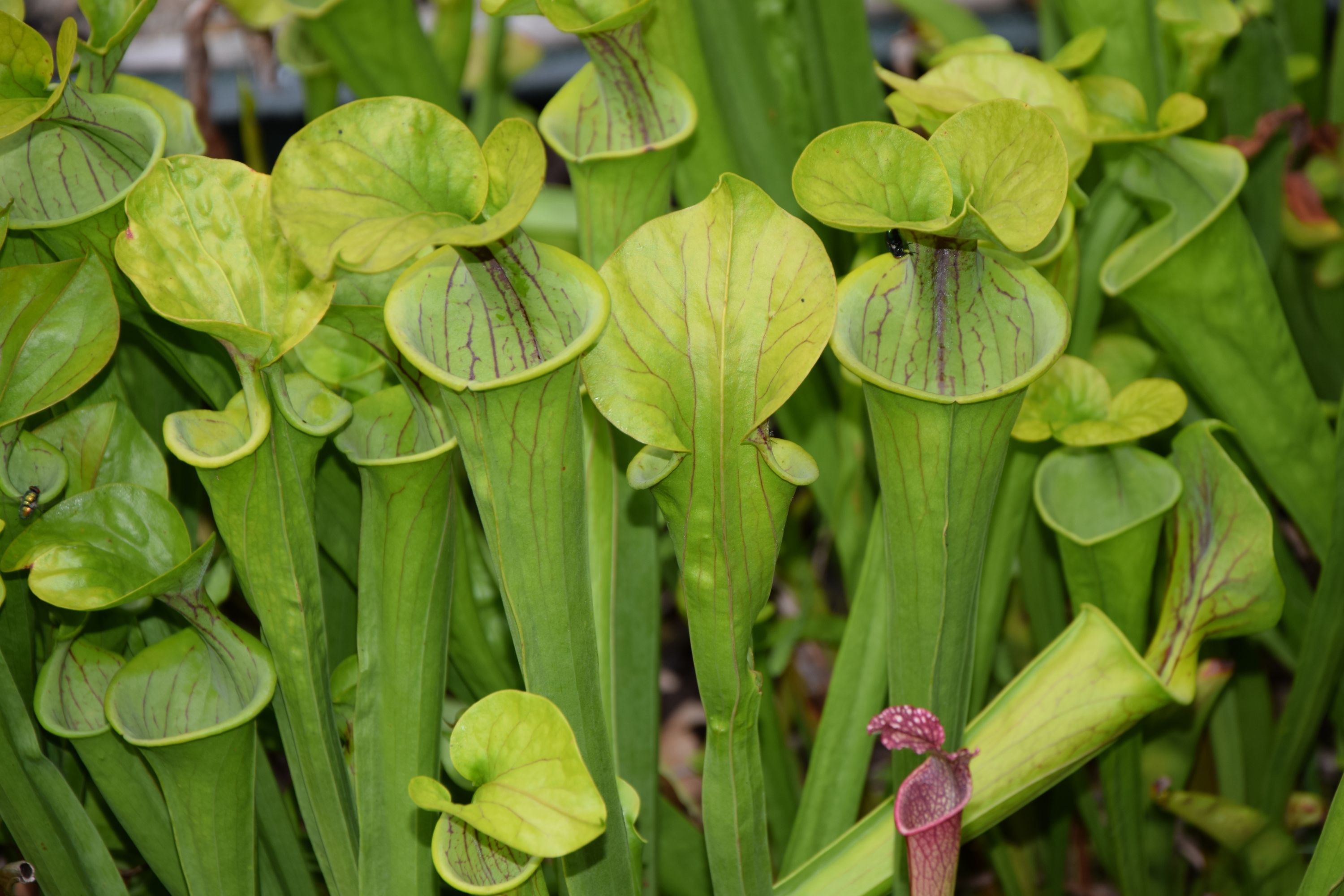"Hooded pitcher plant "
(Sarracenia minor)

Description
Sarracenia minor, also known as the hooded pitcherplant, is a perennial, terrestrial, rhizomatous, herbaceous, carnivorous plant in the genus Sarracenia. Like all the Sarracenia, it is native to North America. The typical form is a relatively small plant with pitchers about 25–30 centimetres (10–12 in) in height. An especially large form, with pitchers up to 90–120 centimetres (3–4 ft) high, grows in the Okefenokee marshes, at the border between Georgia and Florida. The tubes are mostly green throughout, but can also be reddish in the upper part. Flowering occurs late March to mid-May. Flowers are yellow in colour and odorless. Over a hundred seeds are produced by a capsule. Sarracenia minor and S. psittacina are the only species in the genus to employ domed pitchers with translucent white patches that allow light to enter. It has been suggested that the light shining through these patches attracts flying insects further into the pitcher and away from the pitcher's mouth in a similar manner to Darlingtonia californica and two Nepenthes species, N. aristolochioides and N. klossii. The pitcher is filled with water and enzymes produced by the plant and helpful in the digestion of prey. In the wild, Sarracenia minor seems very attractive to ants, although it also attracts and eats a wide range of flying insects. This plant can be found in areas of northern and central Florida and in Georgia up to the southern part of North Carolina. The species exhibits the southernmost range of any member of the genus Sarracenia extending to fragmented populations surrounding Lake Okeechobee in south-central Florida.
Taxonomic tree:







